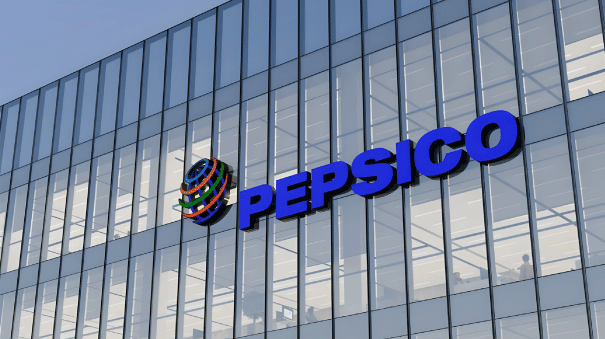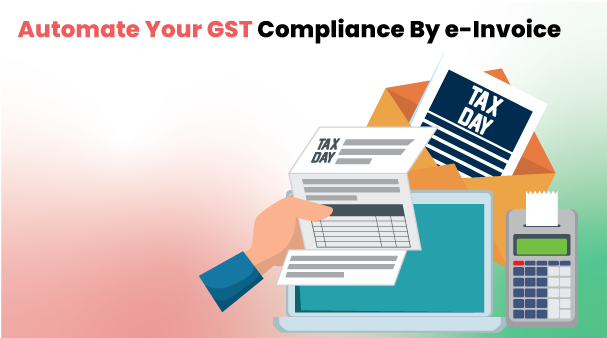After the implementation of the GST law, certain provisions were introduced that could prove beneficial for taxpayers. One of the major changes was the introduction of e-invoicing provisions under GST. The e-invoicing was implemented in a phase-wise manner and with effect from 01-04-2022, the applicability of e-invoicing under GST was extended to businesses with aggregate turnover exceeding Rs. 20 crores. This was done through issue of Notification No. 01/2022. So, what exactly is e-invoicing and what are its benefits and features? Find out here!
What is E-invoicing Under GST?
E-invoicing is the facility provided by the GST portal whereby the GST portal automatically authenticates the B2B invoices. E-invoicing was introduced to standardise invoice generation among the taxpayers and reduce redundancy in compliance. E-invoice has been the key to increasing transparency and reducing evasion and fraudulent practices.
How will e-invoicing benefits to Small businesses and to Government?
E-invoicing provisions under GST certainly came up with a lot of benefits. Here are some of the significant benefits to the small businesses as well as the government:
E-Invoicing Benefits to Small Businesses
● Single reporting of B2B transactions: After the e-invoice gets authenticated in the IRP, the details get auto-populated in the GSTR-1, which reduces the duplication of work. Thus, there is no need to fill in all the details again in GSTR-1.
● Ease in the creation of e-way bills: Another benefit of e-invoice is that the e-way bill can be generated directly with the details furnished in the e-invoice. You just need to enter the vehicle details, and your e-way bill is ready.
● Intimation to Buyers: The buyers are intimated of the generation of the e-invoice through their registered email ID. The buyers can accept or reject the e-invoices on a real-time basis. It also facilitates the reconciliation of the purchase records of the buyer.
● Reduction of Errors: Once the e-invoices are generated, the details get auto-populated in GSTR-1 and also facilitate the generation of e-way bills. With this multi-purpose reporting, data-entry errors get reduced to a great extent as data needs to be entered only once.
● No Fear of Losing Invoice: Invoices can be misplaced easily. However, with e-invoice, the taxpayer can generate it an end number of times even if you lose your invoice. This can be done by visiting the portal or scanning the QR code.
E-Invoicing Benefits to Government
The primary purpose of the government in introducing the e-invoicing rules under GST was to facilitate taxpayers in doing multi-purpose reporting by providing data only once. Apart from this, frauds and tax leakages have been one of the major concerns of the government. As e-invoices require authorization from the government through IRP, instances of subsequent changes and modifications of invoices are reduced. Also, as the data gets auto-populated, all the e-invoices generated are subsequently considered in GSTR-1 and GSTR-3B, thereby reducing tax leakages.
What are the two major features of e-invoicing ?
1)IRN:Also known as Invoice Reference Number, an IRN is a unique number generated by the Invoice Reference Portal (IRP) using the hash algorithm. It is a 64-characters long number that is unique for each invoice. The IRN is a combination of:
● Supplier’s GSTIN
● Supplier’s document number (invoice number, credit note number, debit note number)
● Financial year in ‘YYYY-YY’ format. For instance, 2022-23.
This ensures that the same document is not submitted twice in a financial year
2)QR Code:Once the invoice is validated by the IRP, an IRN will be generated along with a QR code. The QR code enables offline checking of the invoices, and it contains the following information:
● GSTIN of the recipient
● GSTIN of the supplier
● Invoice date
● Invoice number
● Number of items
● Invoice value
● HSN code of the primary or main item
● IRN / Hash
Ways to Upload E-invoice Data
E-invoice shall be generated by creating an invoice in the e-invoice schema using the ERP or accounting software. E-invoice schema is the standard format prescribed for e-invoices. Once all the mandatory details are provided, the software will generate a JSON file for all the invoices created. The JSON file shall be uploaded to the IRP portal.
Once the JSON is uploaded, the IRN will be generated using the standard hash algorithm. Once generated, the JSON file of the invoice shall be uploaded along with the IRN on the IRP. Again, this could be done directly or through any third-party software.
The IRP will validate and authenticate the JSON file of invoices and the IRN against the GST central registry. Once the verification is done, the IRP will add a digital signature and QR code.
The data of the e-invoice will be shared with the GST portal and e-way bill portal. This will facilitate the generation of GSTR-1 and e-way bills.
Therefore, for generating e-invoices, a proper ERP or accounting software is a must. This is also the case for bulk e-invoice generation. But which is the ideal software to ensure e-invoice compliance?
Wepsol – One Stop E-invoice Solution
Wepsol has been pioneering in helping small businesses ensure e-invoice GST compliance. It allows companies with a turnover between Rs. 20 crore to Rs. 50 crore to generate unlimited e-invoices for six months. Being a government-appointed GST Suvidha Provider (GSP), it provides the fastest and simplest e-invoicing, e-way bill, and GST filing software to ensure timely GST compliance. Following are the benefits through which it simplifies the e-invoice compliance for small businesses:
● Enhanced and distinct summary dashboard
● 3-step generation of e-invoices: Validate >> Upload >> Generate
● Bulk upload of e-invoices through excel template
● Customization of e-invoices like entity logo
● Seamless exception handling process
● Expert and well-trained support staff
● View, download or export e-invoices for multiple GSTINs
● Generate a report of IRNs created for a range of period
● Prepare GSTR-1 with ease
GST automation is the key to ensuring accurate and timely compliance. With Wepsol as your GST compliance service partner, standardise your e-invoicing practice now.

